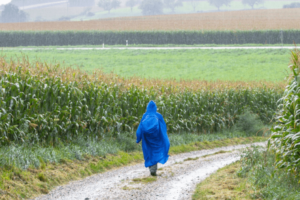Whether you are going for a short local hike or you’re planning a long weekend trip in the hill, you need to make sure you pack your rucksack correctly. Even if you’ve bought the best backpack for your trip, if you don’t pack your things correctly, it could lead to you becoming fatigued or also injured.
On a typical hike, by about two in the afternoon, after a few hours of hiking, the back starts to hurt, and it’s usually caused by the rucksack not being packed correctly. There is very much, a right way and a wrong way to pack your bag.
Pack A Rucksack
When you come to packing your rucksack for an overnight hike in the mountains, you need to take into account two primary considerations concerning your belongings – How much they weigh? And, When You’re going to be needing them next?
A change of clothes or your sleeping bag will not be needed during the day and therefore can go at the bottom of your sleeping bag, whereas your first aid kit, food and any specialist equipment you will need that day, will need quick access to, and therefore should go right at the top of your bag.
In an ideal world, you’re trying to put together a bag that is balanced effectively, sits comfortably on your back while no affecting your centre of gravity too much, and doesn’t move around and therefore throw you off your balance.
Below is our eight-step plan to packing your backpack correctly to make sure you don’t have problems on hills.
Steps to Packing a Rucksack.
- Step One – Plan what you need to take and stick to the essentials, particularly if you are going for more than a few days. Who knows what’s going to catch your eye when you are out and about. If you are planning of bringing things back, then make sure you have more than enough room for it.
- Step Two – Lay everything out on the bed and make your final decision about what you are going to take. Some people set a weight limit, and others set a capacity limit and stop once it’s reached.
- Step Three – Separate your items into bags so you can get them quickly when you need them. For example, one bag for waterproofs (Check out our best dry bags here) and another for shoes (Check out our best travel organisers here) and a final bag for extra clothes. When packing clothes, make sure you roll them up tightly instead of folding them. It’s the best way to save room. It is best to put any electrical items, such as MP3 players and torches, anything you need to get at quickly in the side pockets.
- Step Four – If you’re staying overnight and taking cooking equipment with you, make sure you buy pots and pans that help to save room by either buying interlocking pans or by putting small items inside them.
- Step Five – Pack heavy items, first, medium items second, and light items last. This puts the weight in the places where the rucksack has its most substantial support. Though backpacks have padding on the back, make sure that nothing is poking through into your back.
- Step Six – Depending on what sleeping bag you buy, you should be able to fit it inside your backpack. This will keep it dry. However, your sleeping matt can be attached vertically, to the outside of your bag.
- Step Seven – The outside of your backpack is exposed to the elements. This includes both rain, and also potentially damage caused by the bag being thrown around. As a result, I place my water in the side pockets, and if I’m not using my hiking-poles, I attach these as well.
- Step Eight – Electronics, maps, food and anything else that can easily be broken or lost, I keep in my walking coat. This way, it will not get lost or broken
Finally
We touched on this above, but first make sure you take a first aid kit everywhere you go, and always make sure its right at the top of your bag allowing you to access its contents if needed quickly.
Once you’re packed, pull the cord at the top of the bag as tight as possible. It will pull everything together and stop it from moving around.







